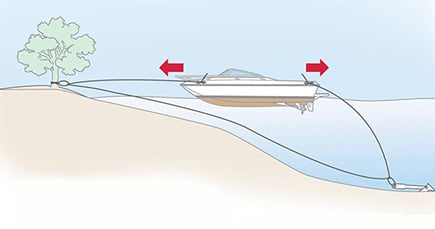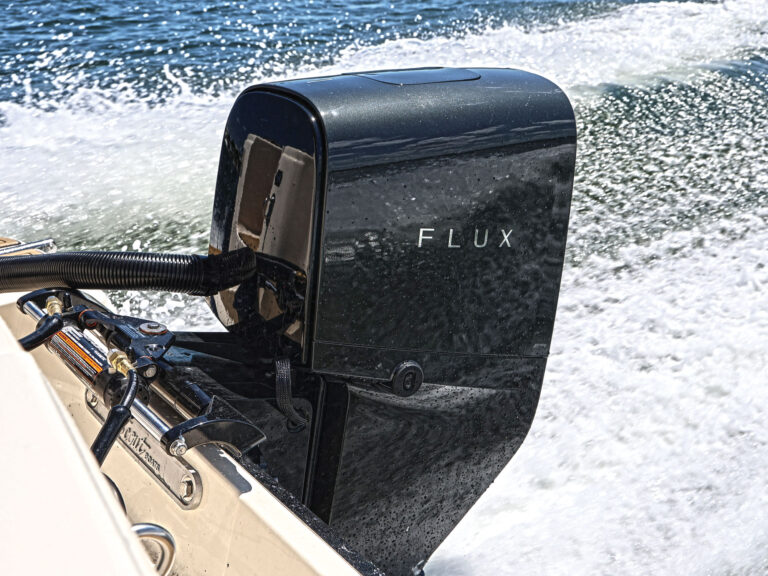Here’s a technique that’s useful when you need to get off your boat in water shallow enough to wade ashore, yet also secure the boat so that a drop in water level won’t leave it high and dry. Whether you call it a clothesline moor or an outhaul, it’s slicker than mossy rocks. And it’s easy to do, once you collect a few pieces of gear.
The clothesline needs two anchors to work — one on the beach and one in the water. The shore anchor can be in situ, like a boulder or tree. Lacking natural blessings, you can use a spike, sand screw, grapple hook or another boat anchor. It all depends upon your boat and the specific topography of the landing you’ve chosen. Do what you think is best, making sure your boat’s firmly connected to terra firma.
The second anchor is your boat anchor, which you already have. Again, sizes and types vary with region, boat and preference. Whatever anchor you’d feel secure swinging to in the specific location is the one to use.
The two anchors are connected by a loop of line. (See where this is going?) So you’ll need a length of line equal to twice the distance between your seaward and shoreward anchors.
Finally, you’ll need some miscellaneous bits: a pair of galvanized rings or pulleys (aka blocks) and some shackles. First, shackle a ring or block to each anchor’s chain, where you’d normally attach the rode. Note: In weedy waters, a ring is less likely to get jammed, though it’s a bit harder to heave the boat in than it is with a line rove through blocks.

Step 1
Wade ashore and secure an anchor. Get back in your boat.
Step 2
Head out deep enough to drop the seaward anchor in a spot that will still carry your boat’s draft at low tide. Reeve the line to its midpoint through the block or ring shackled to this anchor. Pay out the doubled line off the stern until the anchor is set, and cleat it off with one leg of the loop. Scope should be appropriate to the circumstance.
Step 3
Motor to shore, paying out the other leg of the line as you go. On the beach, reeve the line through the block or ring of this anchor; bring it back to the boat, and cleat it off at the bow.
Step 4
Heave on one end of the line to pull the boat out to the seaward anchor; heave on the other leg to bring it back in to the beach. Now dine ashore, hike in the woods or camp for the night without fear of returning to the boat and finding it high and dry.
As with any technique, the first time trying the outhaul or clothesline moor may be rough. After that, you’ll nail it and adapt the process to best fit your specific circumstance. After all, most of us aren’t long-range cruisers landing in vastly different terrain every week. But even if you are, the outhaul is a great technique to stow in your bag of tricks.
Tweak the system to refine your outhaul.
1. Attach floats to the line fore and aft of the boat, to keep the two legs separated so current doesn’t twist them together under the water. The floats can be attached by any method, but tying a bowline-on-the-bight makes quick work of it.
2. You can also add snaps to the ends of the line to make hook-up quick.
3. For a dinghy or other small boat, you can drive a post in offshore and attach a block to its top. Reeve the line through this block and through another anchored ashore. Tie the dink’s painter to the outhaul with a rolling hitch. Voila! Dinghy Outhaul.
4. If you want to move the boat from your “spot” temporarily, for an hours skiing perhaps, tie a buoy or fender to your outhaul line (using that trusty bowline-on-the-bight again) to make it easy to pick up when you return.








